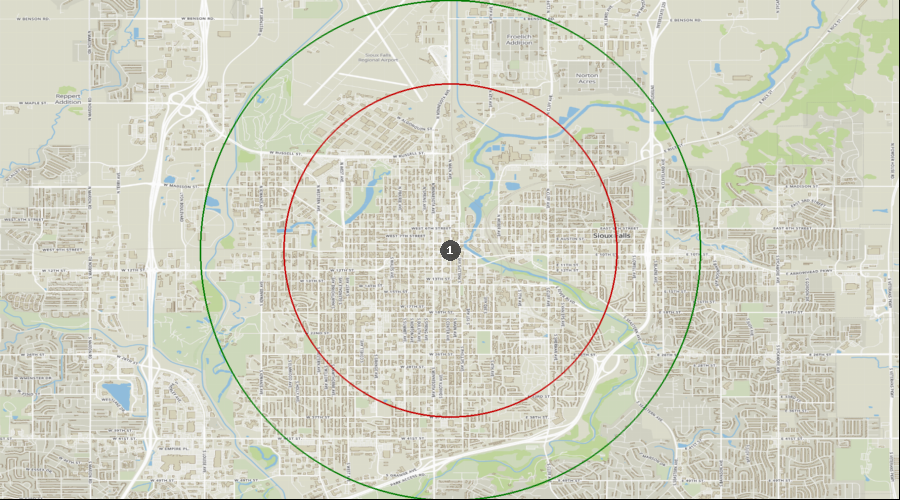| Demographics Characteristics: U.S. Census, County Level Estimates | Minnehaha County, South Dakota | South Dakota | United States |
| Population estimates, July 1, 2023, (V2023) | 206,930 | 919,318 | 334,914,895 |
| Population estimates base, April 1, 2020, (V2023) | 197,207 | 886,668 | 331,464,948 |
| Population, percent change - April 1, 2020 (estimates base) to July 1, 2023, (V2023) | 4.9% | 3.7% | 1.0% |
| Persons under 5 years, percent | 6.8% | 6.3% | 5.5% |
| Persons 65 years and over, percent | 14.1% | 18.4% | 17.7% |
| Median households income (in 2023 dollars), 2019-2023 | $76,074 | $72,421 | $78,538 |
| Per capita income in past 12 months (in 2023 dollars), 2019-2023 | $41,644 | $38,880 | $43,289 |
| Persons in poverty, percent | 9.7% | 11.8% | 11.1% |
| Owner-occupied housing unit rate, 2019-2023 | 63.5% | 68.6% | 65.0% |
| Median value of owner-occupied housing units, 2019-2023 | $266,600 | $236,800 | $303,400 |
| Median Home Value as % of Median Income | 350.4% | 327% | 386.3% |
| Persons per household, 2019-2023 | 2.37 | 2.42 | 2.54 |
| Living in the same house 1 year ago, percent of persons age 1 year+ , 2019-2023 | 84.6% | 86.5% | 87.3% |
| Language other than English spoken at home, percent of persons age 5 years+, 2019-2023 | 10.2% | 6.7% | 22.0% |
| Bachelor's degree or higher, percent of persons age 25 years+, 2019-2023 | 34.6% | 31.1% | 35.0% |
| With a disability, under age 65 years, percent, 2019-2023 | 7.4% | 8.1% | 9.1% |
| Persons without health insurance, under age 65 years, percent | 9.2% | 10.0% | 9.5% |


